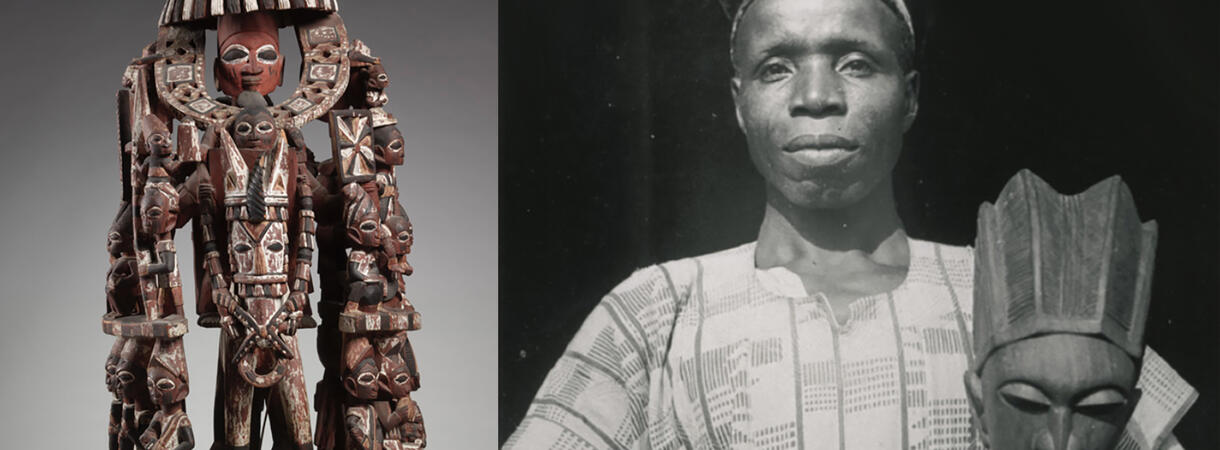'Bámigbóyè: A Master Sculptor of the Yorùbá Tradition'

A new exhibition at the Yale University Art Gallery, ‘Bámigbóyè: A Master Sculptor of the Yorùbá Tradition,’ presents a nuanced account of the artist’s 50-year career and presents him as part of a woodcarving tradition that flourished during a time of great societal upheaval in Nigeria. The works are drawn from the collections of national and international museums including the Yale University Art Gallery and the National Museum in Lagos, Nigeria. The exhibit was organized by James Green, the Frances and Benjamin Benenson Foundation Associate Curator of African Art at the Gallery.
Bámigbóyè was born in about 1885 in the Ìsálù family compound of Kájọlà, in the Òkè-È ̣ró ̣ Local Government Area of present-day Kwara State, and died at his home in Kájọlà in 1975. He was part of a generation of Èkìtì Yorùbá woodcarvers who came of age during the first decades of British colonial occupation— formalized in 1900—Bámigbóyè lived during a time of intense social, religious, and political change, which is reflected in his art. By the time of Nigerian independence, in 1960, Bámigbóyè was revered as one of the greatest living Yorùbá carvers.
The exhibition and accompanying catalogue draw on field research, archival resources preserved in Nigeria and the United Kingdom, oral histories shared by permission of Bámigbóyè’s family, and the artist’s own oríkì, or oral praise poem. In the exhibition, new and archival photography, videos of interviews conducted with the artist’s community, and an audio guide featuring stories about him as told by his family combine to present a detailed and nuanced portrait of the artist.
The exhibition and publication have been made possible by the National Endowment for the Arts, the Andrew W. Mellon Foundation and the Mary Cushing Fosburgh and James Whitney Fosburgh, b.a. 1933, m.a. 1935, Publication Fund; the Robert Lehman, b.a. 1913, Endowment Fund; and the Institute for the Preservation of Cultural Heritage.
~~~
To learn more about the Bámigbóyè exhibition, visit the YUAG website.
